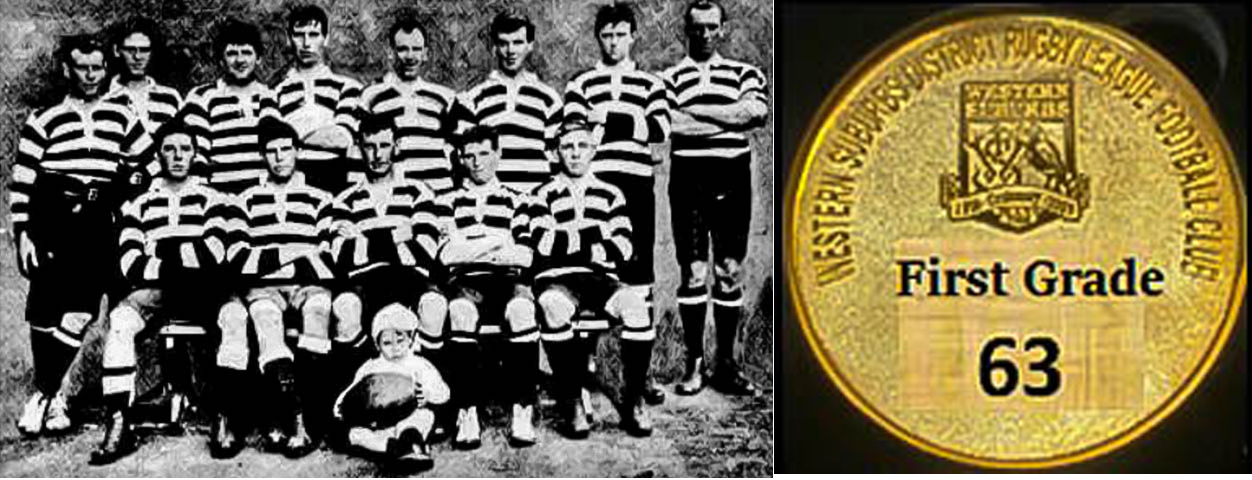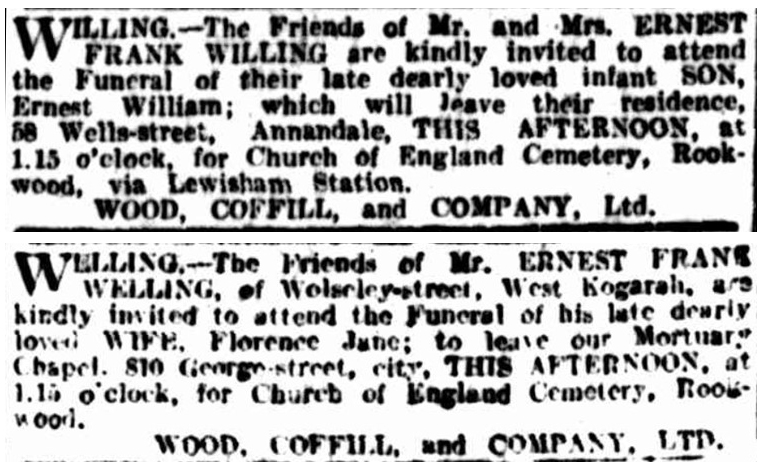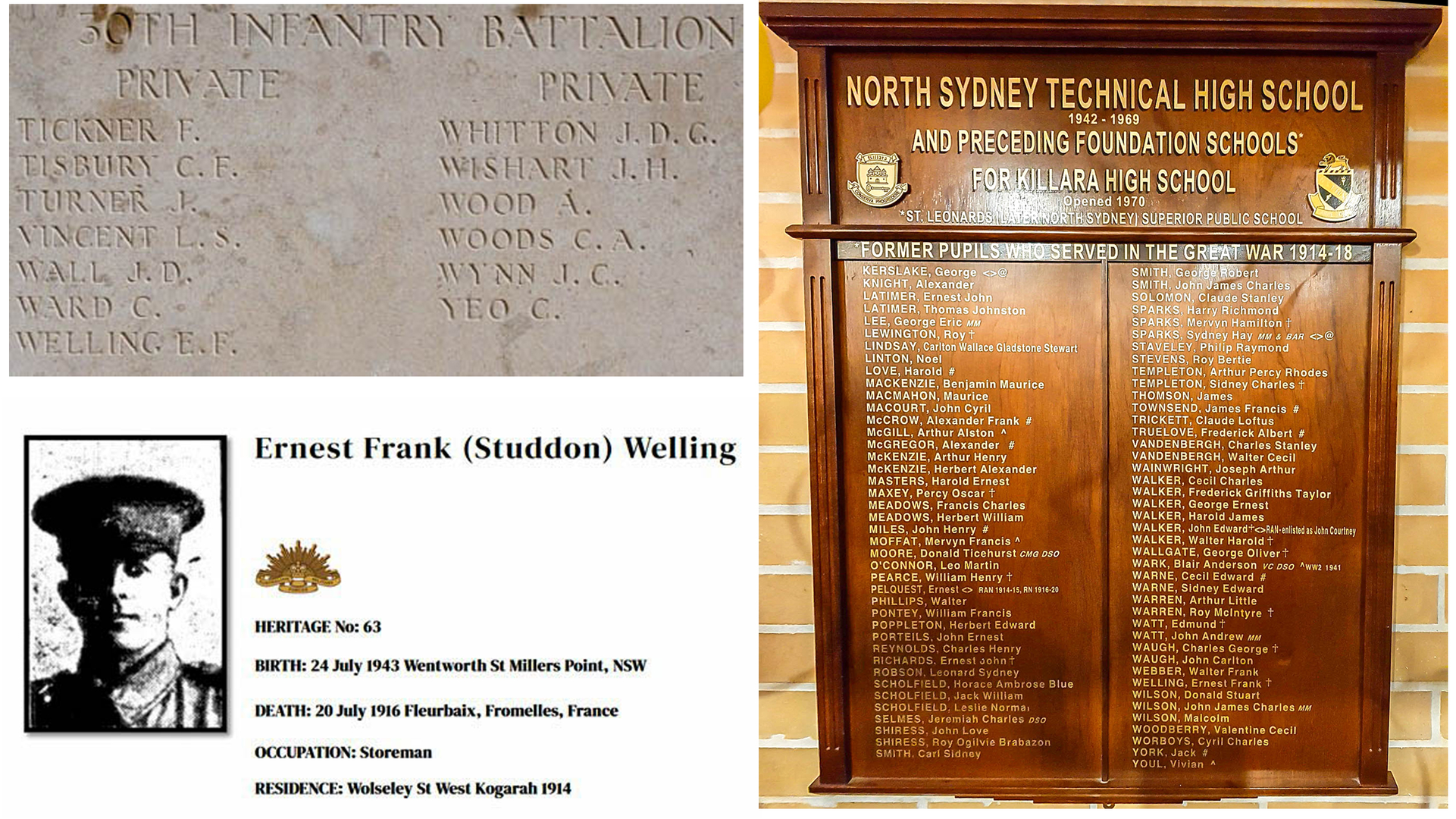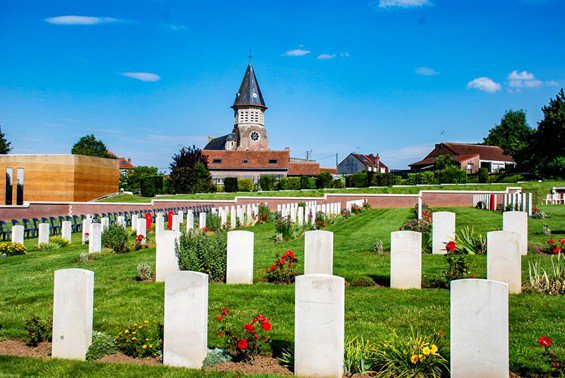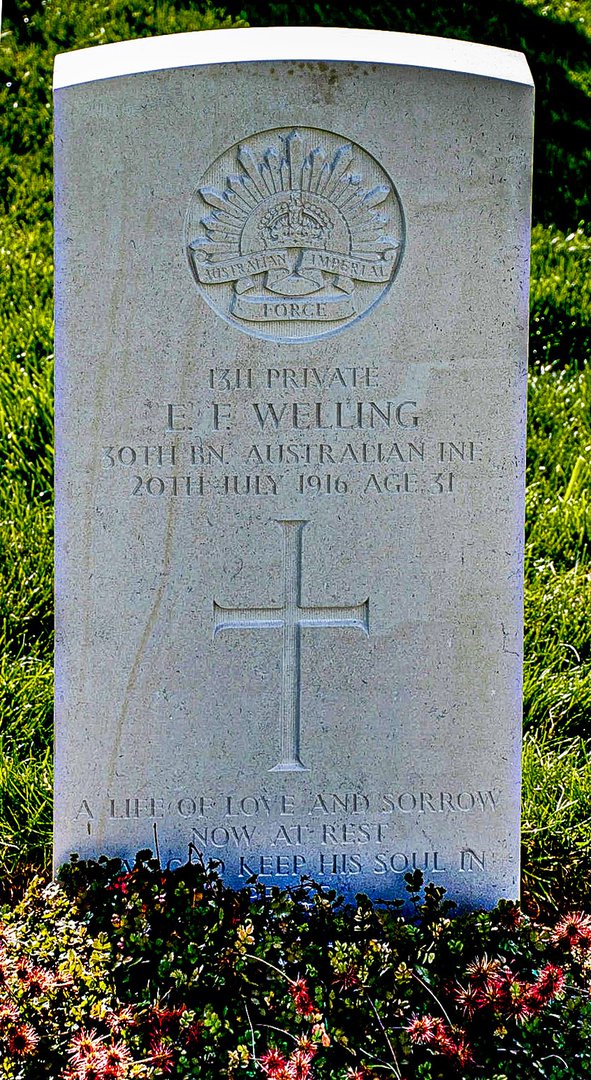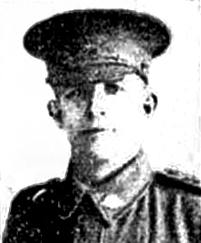
Ernest Frank WELLING
Eyes grey, Hair medium brown, Complexion medium
The Journey to Identify Ern Welling
A Stirring Tribute from Ernest’s Family
From John Studdon (3rd cousin) to Ernest
Dear Ernest,
Your legacy resonates deeply within me, despite our paths never crossing. The sacrifices you made for our country stand as a testament to your unwavering bravery and strength. In the tumult of war, you exemplified courage that inspires me to this day.
To know that we share a bond of family fills me with immense pride. Your actions, though undertaken in a time of great adversity, speak volumes about your character and resolve. The honor of having you as a cousin is one I hold dear, even though our lives never intertwined.
While I may never have the chance to shake your hand and express my gratitude in person, please know that your memory lives on in the hearts of our family. Your selflessness and valor will forever be a source of inspiration for generations to come.
With heartfelt admiration,
John William Studdon and Family
Early Life
Ernest ‘Ern’ Frank (Studdon) Welling was born on 24 October 1884 at Miller's Point, Sydney, New South Wales. His mother was Ada Studdon, but his father is unknown. When Ern was a year old, Ada married Alfred Sydney Welling, 2 November 1885. Alfred Welling and his 17-year-old brother Ernest Frank Welling had come from England in 1883. Alfred arrived in Sydney in March 1884.
His brother Ernest returned to England later, married and had a son and a grandson both named Ernest Frank Welling. Ada had three children with Alfred:
- Alfred Sydney (1886-1963)
- Florence Lillian (1888-1951)
- and Eric, who died aged 2.
Alfred worked as a picture framer. Ern did his schooling at North Sydney Technical School and afterwards he held jobs as a storeman and a salesman.
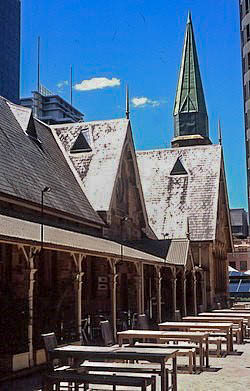
(Now Greenwood Hotel)
Ern’s stepfather Alfred died 1902. Ern and Alfred junior were probably working at the time and Florence, 14, was likely still at school. Ada did remarry, to William Mitchell, but not until 1915. She lived until 1953. Alfred junior had eight children and Florence had two, so presumably Ada was part of a very extended family in her later years. Ern was athletic, playing Rugby for the Wests, member number 63. He made the firsts for the 1910 season.
Ern married Florence Jane Bryant on 16 Aug 1911 in St Barnabas' Church, George Street West, Sydney. He was a salesman at the time. A year later they had a son, Ernest William, who was born in August 1912. Ern’s happiness was short lived however, as his son died in 1913 and then Florence died in November 1914 from pregnancy complications.
It must have been a terrible time for all of the family. Ern’s mother Ada would have been a great support to him at this time and, based on the number of family notices posted in the newspapers, all of his wife’s relatives as well. After Florence’s death, Ern moved in to live with his mother at 54 Styles St, Leichardt.
Off to War
With ‘War fever’ running high and no longer having any immediate family ties, Ern enlisted on 16 August 1915 at Holdsworthy, New South Wales. He was assigned to the 30th Battalion, C Company. Training commenced in the Liverpool camp. In September they moved to the Royal Agricultural Show Grounds in Moore Park, Sydney. There were numerous reports of their activities in the papers.
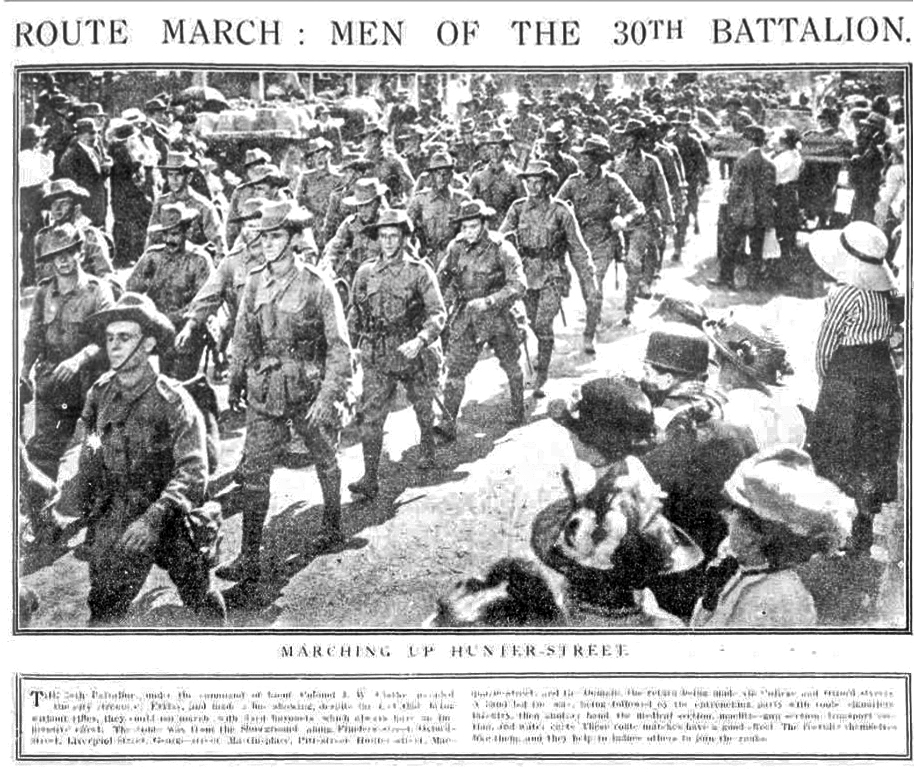
Having survived the camp, the 30th Battalion were well trained, disciplined, able to effectively use their rifle and bayonet, run with packs or heavy ammunition boxes and, by the beginning of November 1915, they were ready to go overseas. Some country boys had never seen big ships or aeroplanes before, so it was the start of an enormous adventure. Excitement was building as the time to leave arrived. They marched from Sydney Showgrounds to the troopship Beltana.
While marching to the ship, the crowd showered them with chocolates and cigarettes and photos of the time show massed crowds dominated by Union Jack flags. With a huge gathering on the wharf to call and sing the farewell songs, ribbons became entangled, streamers tugging, and military bands playing. Launches always followed the troopships down to the harbour and out through the heads with packed ferries joining them, ships horns sounding, and the deep horn of the Beltana responding and reminding the small ships to stay clear.
###Egypt
Ern spent the first seven weeks at Ferry Post guarding the Suez Canal and continuing training. February and March were at the camp at Tel el Kebir, where they were inspected by H.R.H. Prince of Wales.
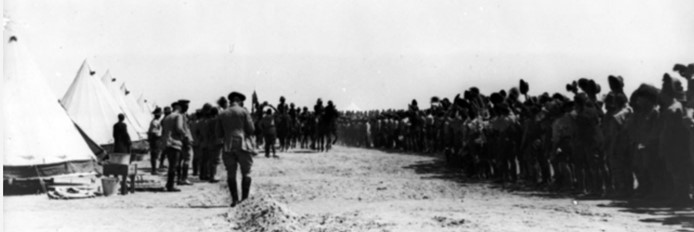
For much of April and May were back in Ferry Post, including some time in the front-line trenches there. There were the usual complaints of the heat, water supplies and flies.
To the Western Front
The Battalion left Egypt for the Western Front on 16 June 1916 on HMAT Hororata, arriving in Marseilles on 23 June. After landing, there was a 60+ hour train ride to Hazebrouck, 30 km from Fleurbaix. They arrived on 29 June and were then encamped in Morbecque.
Private F.R. Sharp (2134) wrote home about the trip:
“From the time we left Marseilles until we reached our destination was nothing but one long stretch of farms and the scenery was magnificent.” “France is a country worth fighting for.”
Training now included the use of gas masks and they also would have been well aware of the heavy artillery from the front lines.
The Battle of Fromelles
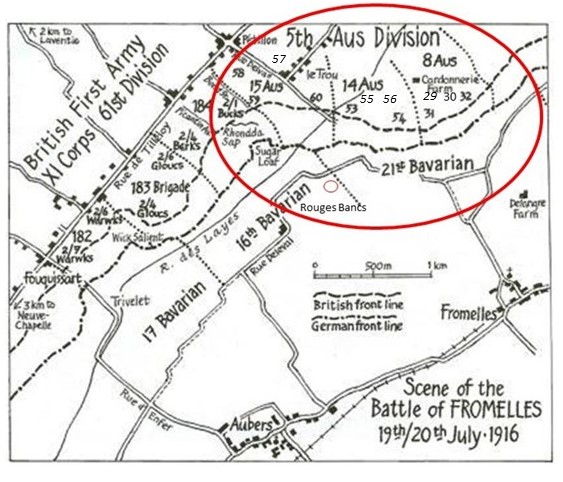
On 8 July they were headed to the front lines, first to Estaires, 20 km, and the next day 11 km to Erquinghem, where they were billeted at Jesus Farm. Ern got his first ‘taste’ of being in the front lines at 9.00 PM on the 10th July.
A week later, they got orders for an attack, but it was postponed due to the weather.
Then, on the 19th July, the 29 officers and 927 other ranks of the 30th Battalion were into battle.
The 30th Battalion’s role in the battle was to provide support for the attacking 31st and 32nd Battalions by digging trenches and providing carrying parties for supplies and ammunition. They would be called in as reserves if needed for the fighting.
The 32nd’s charge over the parapet began at 5.53 PM and the 31st’s at 5.58 PM. There were machine guns emplacements to their left and directly ahead at Delrangre Farm and there was heavy artillery fire in No-Man’s-Land.
The initial assaults were successful and by 6.30 PM the Aussies were in control of the German’s 1st line system (Trench B in the diagram below), which was described as ‘practically a ditch with from 1 to 2 feet of mud and slush at the bottom’.
Source AWM4 23/49/12, 32nd Battalion War Diaries, July 1916, page 11

Ern’s C Company were busily carrying ammunition to support the advances that had been made, but then commanders on scene made the decision to use the 30th as much-needed fighting reinforcements, and Ern’s Company joined in. It was a necessary act, but it had consequences as it interfered with the planned flow of supplies.
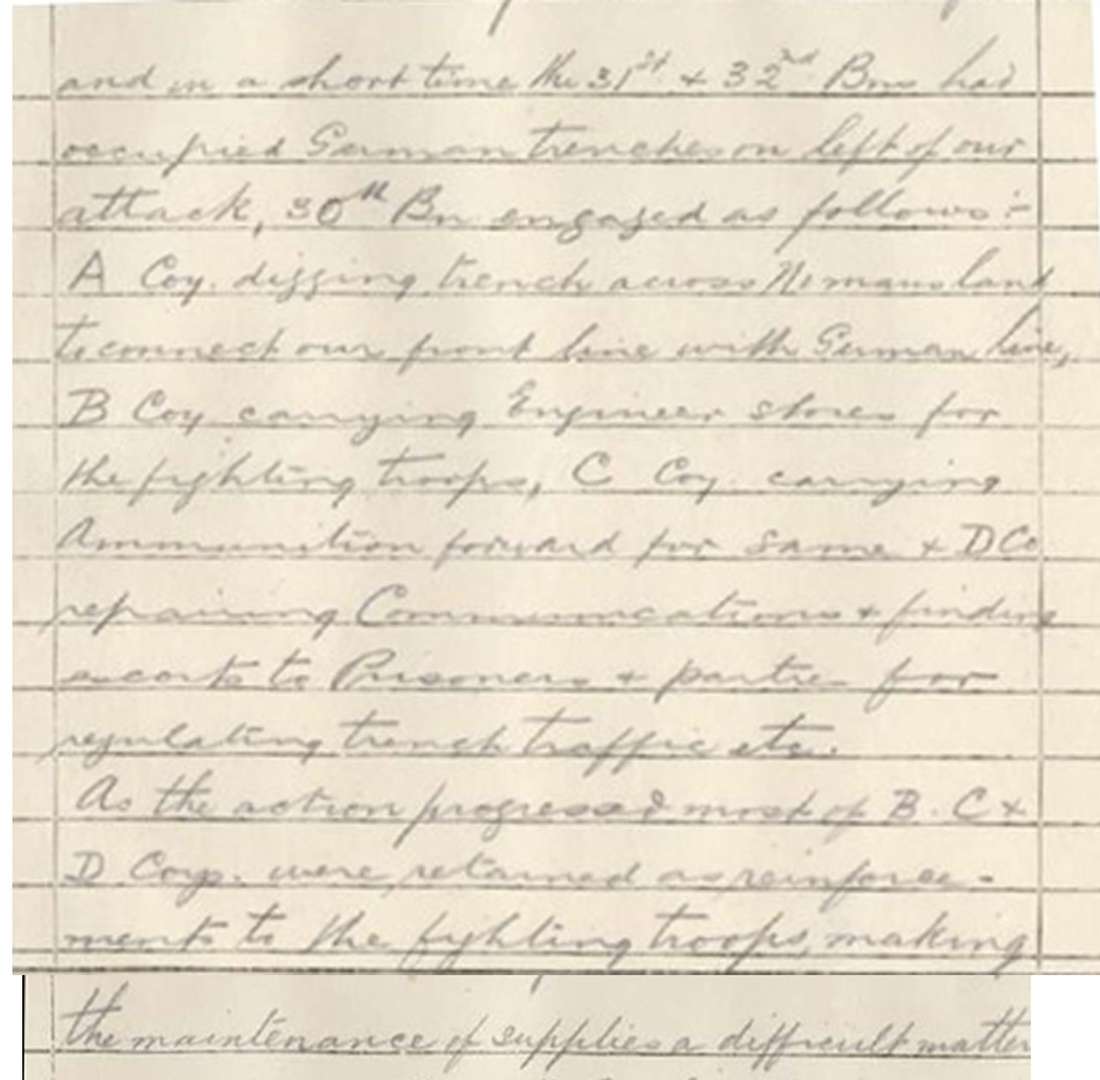
By 8.30 PM the Australians’ left flank had come under heavy bombardment with high explosives and shrapnel. Return bombardment support was provided and the 32nd Battalion was told that ‘the trenches were to be held at all costs’.
Source AWM4 23/49/12, 32nd Battalion War Diaries, July 1916, page 12
When the 30th was formally called to provide fighting support at 10.10 pm, Lieutenant-Colonel Clark of the 30th reported:
“All my men who have gone forward with ammunition have not returned. I have not even one section left.”
Fighting continued through the night. The Australians made a further charge at the main German line beyond Trench B, but they were low on grenades, there was machine gun fire from behind from the emplacement at Delangre Farm and they were so far advanced that they were getting shelled by both sides.
At 4.00 AM the Germans began an attack from the Australian’s left flank, bombing and advancing into Trench A (map). Given the Australian advances that had been made earlier, portions of the rear Trench E had been left almost empty, which then enabled the Germans to be in a position to surround the soldiers.
At 5.30 AM the Germans attacked from both flanks in force and with bombing parties. Having only a few grenades left, the only resistance they could offer was with rifles:
“The enemy swarmed in and the retirement across No Mans’ Land resembled shambles, the enemy artillery and machine guns doing deadly damage.”
By 10.00 AM on the 20th, the Germans had repelled the Australian attack and the 30th Battalion were pulled out of the trenches.
The nature of this battle was summed up by Private Jim Cleworth (784) from the 29th:
"The novelty of being a soldier wore off in about five seconds, it was like a bloody butcher's shop."
Initial figures of the impact of the battle on the 30th were 54 killed, 230 wounded and 68 missing. The ultimate total was that 122 soldiers of the 30th Battalion were either killed or died from wounds and of this total 80 were missing/unidentified. To get some perspective of the battle, when Charles Bean, Australia’s official war historian, attended the battlefield two and half years later, he observed a large amount of bones, torn uniforms and Australian kit still on the battlefield.
After the Battle
With Ern’s C Company having been called in ‘early’ as reinforcements, he would have been in the advanced area of the battle. However, there are no records of his death, either from Red Cross Witness Statements or German reports received after the battle. He was simply ‘missing in action’. With no further reports, on 23 July 1917 Ern was formally declared as having been Killed in Action on 20 July 1916.
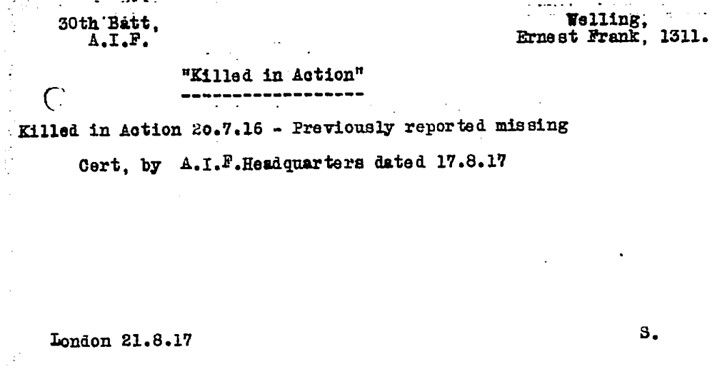
Ada remembers both Ern and Florence after the confirmation of Ern’s death.
Further, Ada named her home as ‘Ernville’, as seen in Ern’s medals documentation.
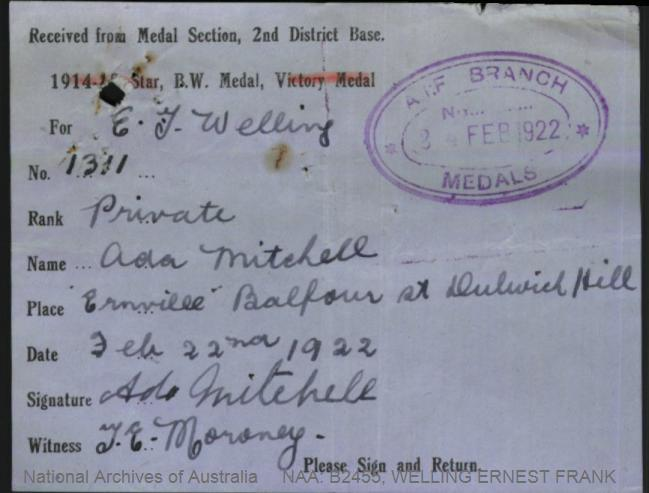
Ern is commemorated at V.C. Corner (Panel No 3), Australian Cemetery Memorial, Fromelles, France, the Australian War Memorial, the Glebe Point Memorial, North Sydney Technical High School and by the Wests Rugby Club.
The Journey to Identify Ern Welling
After the battle, German soldiers removed 250 Australian casualties from the battlefield, burying them in a large pit near Pheasant Wood. This mass grave was not discovered until 2008.
Identification by DNA matching has been ongoing since that discovery as potential relatives have been able to found.
Much of the need for Ern’s DNA match was dependent on finding Ern’s father, as Ern was born illegitimate. A great deal of research has been done by the FAA genealogists, but they were challenged in locating records to ‘prove’ his father.
His actual parentage aside, when Ern reached adulthood he CLEARLY identified as Ernest Frank Welling – marriage and attestation papers - he served and died as a Welling.
The DNA challenge was finally successful and on 23 April 2024, the Honourable Minister for Veteran Affairs and Minister for Defence Personnel, Matt Keogh MP, announced that DNA testing has proven that Ern was identified as being one soldiers who was in the mass grave. This brings the total number of soldiers in the grave that have been identified to 180.
A LIFE OF LOVE AND SORROW
NOW AT REST
MAY GOD KEEP HIS SOUL IN
PEACE
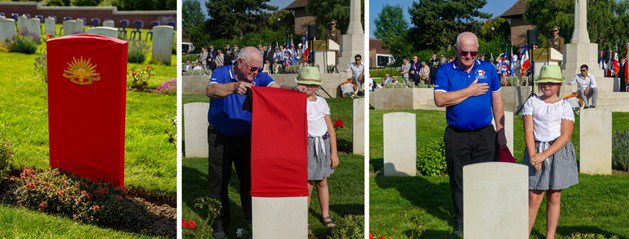
Pheasant Wood Military Cemetery 19th July 2024
The Fromelles Association would love to hear from you

Contacts
(Contact: carla@fromelles.info or geoffrey@fromelles.info).
(Contact: army.uwc@defence.gov.au or phone 1800 019 090).
Donations
If you are able, please contribute to the upkeep of this resource.
(Contact: bill@fromelles.info ).
